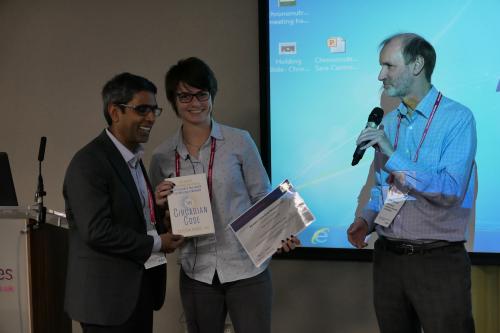As our lifestyles, including work patterns, have become more demanding and irregular, our meal patterns have followed suit, with many people eating most of their daily calories in the evening, and having become accustomed to eating what they want, when they want. This is a potential problem since there is increasing evidence that the structure of meal timing may be a factor contributing to the global rise in obesity.
The chrononutrition meeting assembled scientists with a range of specialisations from epidemiology to whole body metabolism and molecular mechanism, to address interactions between food consumption, sleep, and circadian rhythms, and their effect on nutrition and metabolic health.
Body clocks are critical to our relationship with food. The master circadian clock is located within a discrete regulatory region of the hypothalamus at the base of the forebrain, and its regulation by the light-dark (day-night) cycle has been well studied over a number of decades. It is now established that this brain clock sends information about circadian time to subordinate clocks located throughout the rest of the body, including key metabolic organs (e.g. liver, gut, muscle, endocrine organs and fat tissue). These peripheral clocks have an important role in metabolic processes, being influenced by, and in turn influencing, our behaviour. Critically, in addition to the light-dark cycle, factors such as food intake (when, what and how much), activity, and our sleep/wake cycle can also influence the timing of our body clocks. Accordingly, mixed messages can result when meal time, sleep/wake and light/dark cycles become desynchronized, and the risk of obesity, diabetes and metabolic disease can be increased.
Recent research presented at the meeting focussed on sleep duration and its effects on body weight and macronutrient and fruit and vegetable consumption, and how both short-duration and mistimed sleep can alter the expression of genes in peripheral clocks. The timing of meals and ‘time of day’ eating was another major theme. In human weight loss studies, greater weight loss was achieved by individuals consuming a higher proportion of their energy intake earlier in the day, an effect that may be related to the range of metabolic hormones which peak early in the active (light) phase, making this a more optimal time to eat. Delaying meals has also been shown to affect the expression of clock genes in human fat tissue. The lifestyle option of ‘time restricted feeding’ provides a route to incorporating some of these circadian concepts into everyday life. Where food consumption is spread over as many as 15 hours per day, a constant postprandial metabolic state may be maintained, and rhythmicity thereby compromised. Restricting food consumption to 12 or even 10 hours per day may assist in aligning circadian rhythms and reducing the metabolic health issues typically arising from a high fat diet (including excessive weight gain, glucose intolerance, fatty liver and high cholesterol). If this circadian organization strategy can be demonstrated to be clinically significant, without conscious effort to alter energy or nutritional intake, it could be a viable strategy for health improvement.
The emerging field of chrononutrition looks set to challenge many of our current assumptions surrounding energy balance and body weight regulation, with implications for how we tackle non-communicable disease of dietary origin. It seems likely that personalised approaches to optimising meal patterns and sleep-wake cycles will be useful to many, and especially those individuals whose biological rhythms are challenged by shift work and jet lag.
During the meeting early career researcher Ashleigh Wilcox (MRC Harwell) received a prize for best submitted abstract (pictured) and I also had the opportunity to interview Professor Satchin Panda on Facebook Live; so if you would like to know more about this topic you can log onto Facebook and watch the interview video here.
